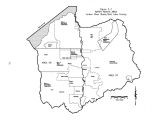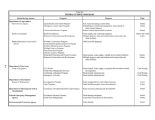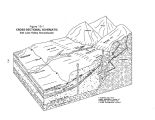| OCR Text |
Show 2.16 Federal Water Planning and Development This section describes the involvement of federal agencies in Jordan River Basin water planning and development, including past and expected future involvement. In the past, federal agencies have played a big role in funding water development projects. This practice is currently in transition with federal agencies decreasing their funding for water development while increasing their regulatory responsibilities. Although the activities of federal agencies are changing, programs still are available to benefit basin residents. The primary concerns expressed by the various federal agencies in the 1990 Utah State Water Plan are: 1) Reserved water rights, 2) interrelated planning ( multiple- use planning), 3) stream and riparian habitat loss and 4) water rights filings. It is anticipated the state will be called upon to shoulder additional financial responsibilities to carry out a number of federally mandated programs. Funding these federal programs may impair the state's ability to respond to other local requests for project funding. Federal programs most significant to the Jordan River Basin in the immediate future are: ( 1) The Central Utah Project ( CUP) completion, under the Central Utah Project Completion Act, not only represents a culinary water source for the Wasatch Front but includes a considerable amount of environmental mitigation funding which will be used to rehabilitate streams in the Jordan River Basin; and ( 2) the EPA's authority under the Federal Safe Drinking Water Act and Clean Water Act. Further comprehensive federal studies in the Jordan River Basin and/ or participation by the BOR, COE, or NRCS in future development would be welcomed, but they do not appear likely. 2.17 Water Conservation/ Education This section discusses water conservation needs, issues, and potential alternatives, plus gives some recommendations for conserving water. In the State Water Plan, water conservation is defined as " wise use," which is much wider in scope than merely reducing water consumption. State water policy on conservation presently requires project sponsors seeking financial assistance from the state to prepare a Water Management and Conservation Plan. The 1992 Central Utah Project Completion Act ( CUPCA) requires 39,325 acre- feet of water conservation within the project service area by the year 2007 and authorized the appropriation of $ 50 million. To date less than $ 4 million has been appropriated. This money is available on a 65- 35 percentage cost share with the 65 portion being project funds. This section includes a discussion of municipal and industrial conservation and agricultural water conservation practices. There is, however, sufficient agricultural irrigation water supply for the existing and projected demand. Also, because Jordan River water quality is poor, it is not presently economically feasible to treat it for municipal use. Consequently, no real incentive exists to conserve Jordan River irrigation water. Conservation of municipal and industrial water is an appropriate and feasible way to meet part of the future water requirements. Numerous opportunities exist for conservation of residential water in Salt Lake Valley. Water- efficient appliances such as low flow toilets and low flow shower heads are only required in'new construction. Most wholesale and retail price structuring provide little incentive for water conservation. The most inefficient use of residential water is over- watering of lawns and gardens. Education coupled with price incentives could help conserve a lot of residential water. Not as much opportunity for water conservation is in the commercial sector as in the residential. Studies do not suggest that commercial users are inefficient. A wide range of water conservation methods have been employed in various regions of the country including: wastewater reuse, public information/ education, institutionalizing water conservation, restricting water use, conjunctive use, landscaping and home water savings, pricing, water measurement, and secondary or " dual" systems. 2.18 Industrial Water This section discusses the present and future uses of water for industrial purposes in the Jordan River Basin. For this report, industrial water use is defined as water used in mining and manufacturing operations including the production of steel, chemicals, paper or any other product. It includes processing, washing and cooling operations as well as employee use. Also included, to the extent they can be identified, are such activities as gravel washing and ready- mix concrete. No single agency or entity regulates the development or use of industrial water, although its 2- 8 |

















































































































































































